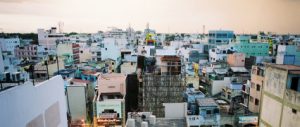“Green economy” has been the buzz-phrase in national and international development circles for quite a few years now. It has almost as many definitions as there are economists. But most agree the concept adds two important elements to the way the economy is traditionally viewed: one, it seeks to include the use of air, water, soil, minerals and other natural resources in the calculation of national budgets. And two, it seeks to add the notion of equity to the notion of efficiency, the bedrock of traditional economics.
It may seem self-evident to many people that these additions are desirable, especially in a world where natural resources are being depleted ever faster, and poverty stubbornly persists. But it is not self-evident to finance ministers. They and their advisers are used to assuming that the supply of clean air and water is limitless, that soil can be used and abused repeatedly and that the only cost associated with mineral extraction is the mining cost.
They are also used to addressing the notion of poverty through separate welfare measures, with only an indirect link to gross domestic product or gross national product, the measures by which countries measure how well they are doing.
For many years, certain leading economic thinkers have been uneasy with the prevalent wisdom on what constitutes national wealth. Nobel laureates Amartya Sen and Joseph Stiglitz have written strong critiques, while economists like Kenneth Arrow and Partha Dasgupta have developed entire theories about what needs to be included and how the true wealth of a nation should be measured. Slowly, their ideas have seeped into development discourse.
The new analysis was supposed to win official recognition from over 100 heads of state of government gathered in Rio de Janeiro for the UN Conference on Sustainable Development, which marks the 20th anniversary of the seminal Earth Summit, which took place in the same coastal city of Brazil in 1992. It has received that recognition, but only just – and with so many conditions as to become largely meaningless and almost impossible to use.
The 49-page declaration to be signed by the political leaders has a whole section entitled “Green economy in the context of sustainable development and poverty eradication”. The section starts by acknowledging the naysayers: “We affirm that there are different approaches, visions, models and tools available to each country, in accordance with its national circumstances and priorities, to achieve sustainable development in its three dimensions which is our overarching goal.
“In this regard, we consider green economy in the context of sustainable development and poverty eradication as one of the important tools available for achieving sustainable development and that it could provide options for policymaking but should not be a rigid set of rules.”
But this is so different from the “rigid set of rules” by which GDP or GNP is measured that a declaration of this sort makes green economy almost a non-starter.
The declaration then addresses the concerns many developing countries have expressed as the concept of a green economy has been pushed in international negotiations in recent months. One section of the draft text reads that a green economy should “effectively avoid unwarranted conditionalities on ODA (overseas development assistance) and finance; and not constitute a means of arbitrary or unjustifiable discrimination or a disguised restriction on international trade, avoiding unilateral actions to deal with environmental challenges outside the jurisdiction of the importing country, and ensure that environmental measures addressing trans-boundary or global environmental problems, as far as possible, are based on an international consensus.”
After the recent decision by the European Union to charge an extra tax on all flights landing within its territory, because planes use petroleum-based fuels, developing countries had become very afraid that the green economy concept would be used to impose more trade restrictions. And so they insisted on this section.
This fear illustrates the bigger worry of those who seek to maintain the business-as-usual situation. Namely, that their national accounts would look far worse if they had to consider the true cost to the environment of using coal and oil, for example. They are aware that it would also look far worse if they took into account the state of health and education of their citizens, ideas strongly advocated within the green economy concept.
The rest of the draft declaration on the green economy does support these and other concepts of sustainable development. A recent study by the International Human Dimensions Programme of the UN University shows what would happen if countries actually worked within a green economy framework.
Called the Inclusive Wealth Report (IWR), it looks at the productive base of economies, based on capital assets – produced or manufactured capital, human capital and natural capital. Traditional economic planners look only at the first. The moment the other two are added, the results change significantly. The IWR authors found that, between 1990 and 2008, six out of the 20 countries they analysed decreased their IWI per capita. In five countries, population increased at a faster rate than inclusive wealth, resulting in negative changes to the IWI per capita.
The majority of the 20 countries studied had seen a rise in manufactured stock per capita during this period. In China, India and Chile, positive changes in IWI were mainly driven by manufactured capital. The authors, led by IHDP head Anantha Duraiappah, also found that human capital –the prime capital form that offsets the decline in natural capital – had increased in all the 20 countries during this period. But they found that in almost all the countries studied, potential gains in renewable resources were not enough to compensate for the depletion of exhaustible stock, like fossil fuels. The general trend they found was that population had been growing in most of the countries, exacerbating the decline in natural capital growth rates, as resources are divided among a larger number of people.
The authors point out that “a large part of what nature offers is a necessity and not a luxury. There are options for some level of substitutability, but in consideration, caution must be taken for irreversible processes that might cause a decrease in well-being.”
Taking these concepts into account gets you more or less to the business-as-usual scenario. Perhaps that is why the green economy section has been watered down to such a pale shade in the Rio+20 draft declaration.
Joydeep Gupta is south Asia director of thethirdpole.net.
Homepage image by Xavier de Jauréguiberry




